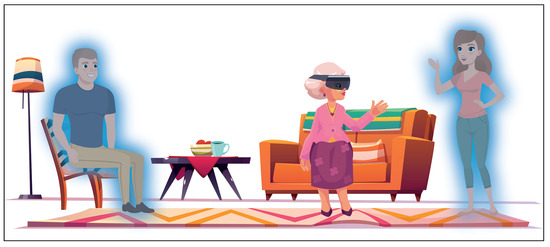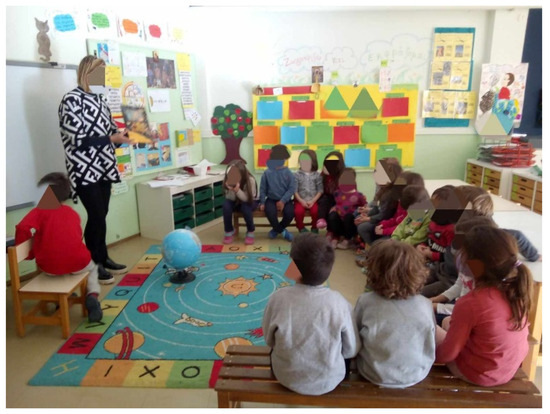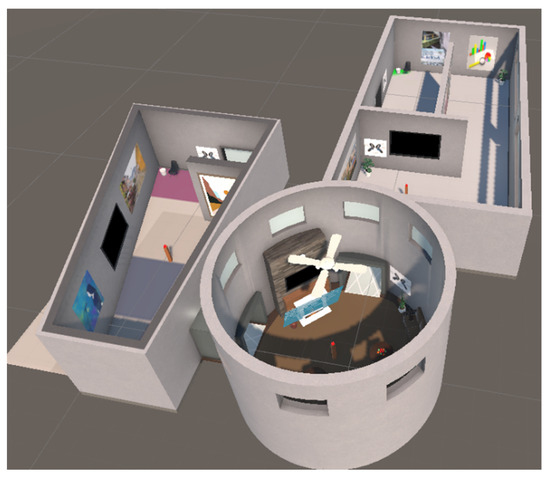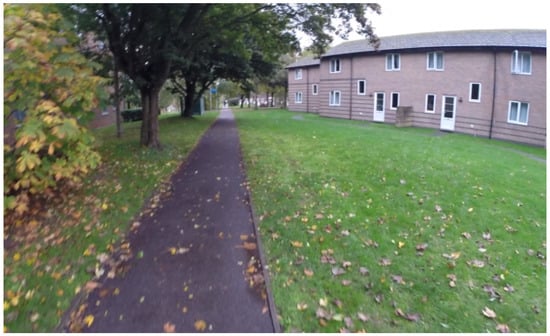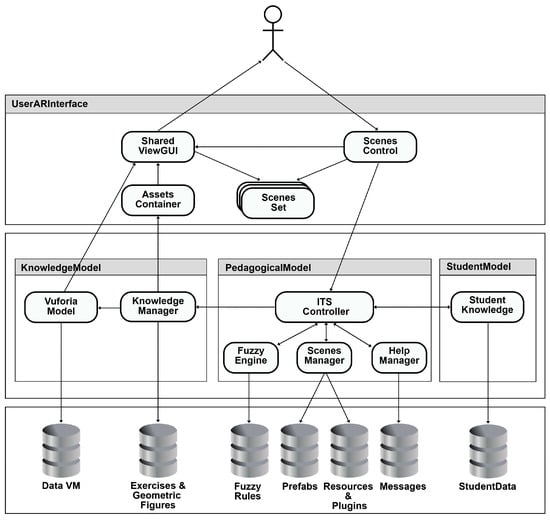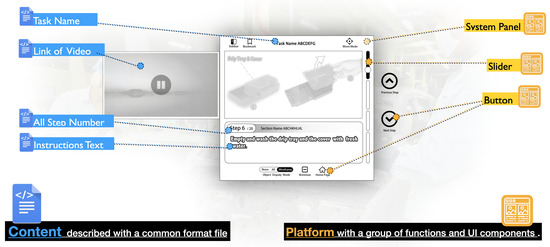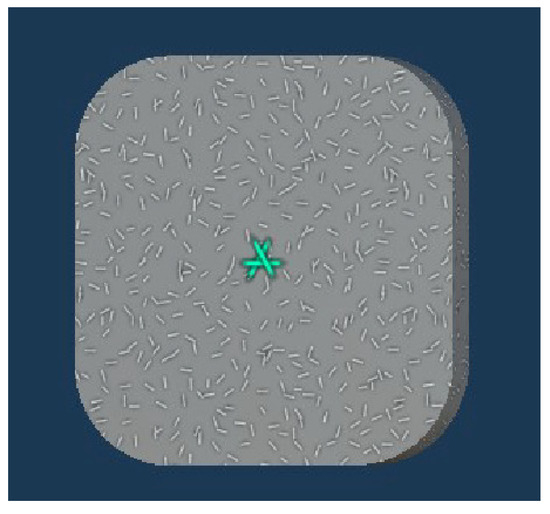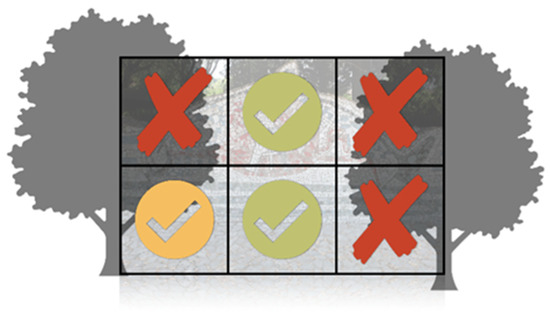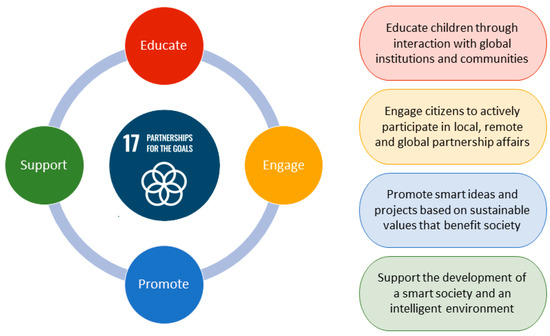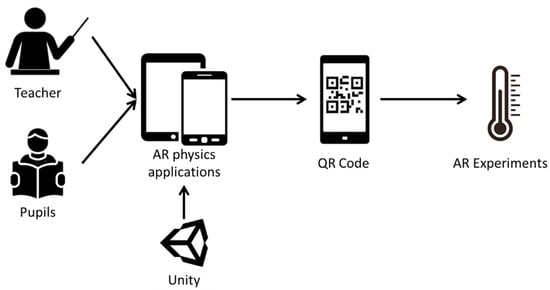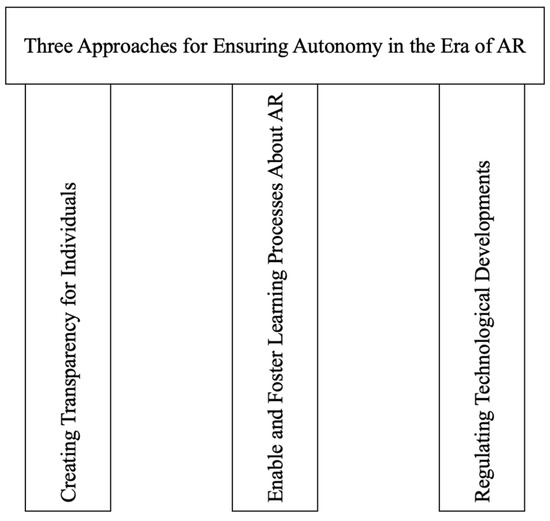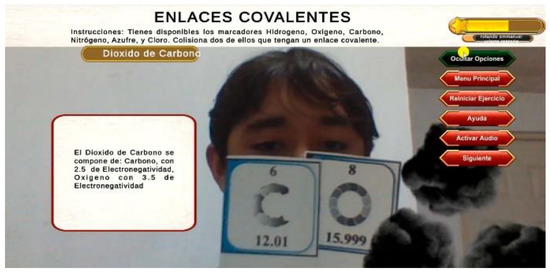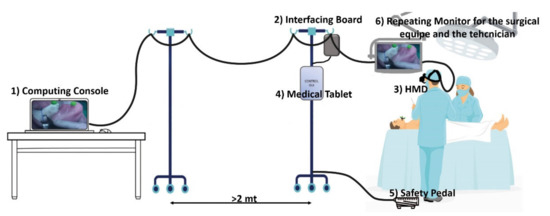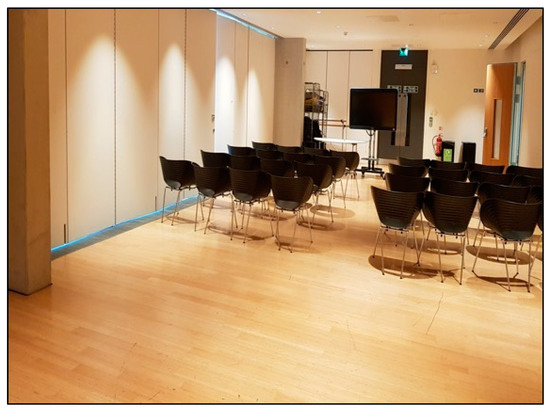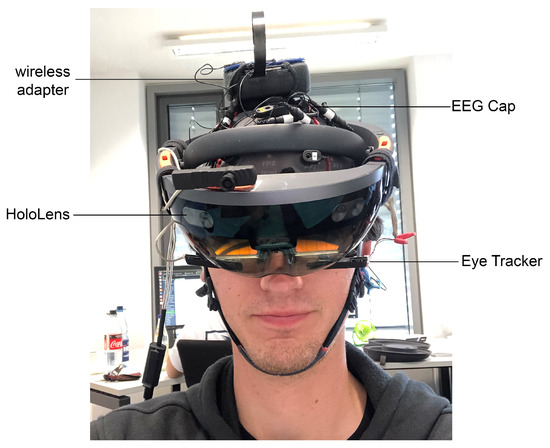Augmented Reality Technologies, Systems and Applications
Share This Topical Collection
Editors
 Dr. Ramon Fabregat
Dr. Ramon Fabregat
 Dr. Ramon Fabregat
Dr. Ramon Fabregat
E-Mail
Website
Collection Editor
Broadband Comunications and Distruted System (BCDS), Institut d’Informàtica i Applicacions (IiiA)University of Girona, Campus de Montilivi, Edifici P4 (17003) Girona, Catalonia, Spain
Interests: inclusive accessible and adaptative learning; learning management systems; co-creation; open educational resources; augmented reality; game-based learning; gifted students
 Dr. Jorge Bacca-Acosta
Dr. Jorge Bacca-Acosta
 Dr. Jorge Bacca-Acosta
Dr. Jorge Bacca-Acosta
E-Mail
Collection Editor
PROMENTE-KONRAD Research Group, Faculty of Mathematics and Engineering, Fundación Universitaria Konrad Lorenz, Bogotá, Cundinamarca, Colombia
Interests: Augmented Reality and Virtual Reality in education; mobile learning; motivation for learning
 Dr. N.D. Duque-Mendez
Dr. N.D. Duque-Mendez
 Dr. N.D. Duque-Mendez
Dr. N.D. Duque-Mendez
E-Mail
Website
Collection Editor
Grupo Ambientes Inteligentes Adaptativos GAIA, Universidad Nacional de Colombia – Sede Manizales, Campus La Nubia, Bogotá, Colombia
Interests: learning management systems; open co-creation; open educational resources; Augmented Reality; Virtual Reality; eLearning; data analysis
Topical Collection Information
Dear Colleagues,
The MDPI Information Journal invites submissions to a Topical Collection on “Augmented Reality Technologies, Systems and Applications”.
Augmented Reality (AR), which adds virtual content to our real-world environment, is expected to become a mainstream technology. An AR system allows for combining or “supplementing” real-world objects with virtual objects or superimposed information and is considered to be an immersive technology. As a result, virtual objects seem to coexist in the same space as the real world. AR brings the possibility of interacting with the physical and virtual world using cutting-edge technologies. This field has been actively growing over the past two decades, and there is an increasing interest in research on AR to uncover the real benefits of using this technology in a wide variety of fields.
The purpose of this Topical Collection is to discuss key issues, approaches, ideas, open problems, affordances, innovative applications and trends in augmented reality, in the areas of medicine, tourism, cultural heritage, arts, education, entertainment, and industrial applications.
We encourage authors to submit original research articles, case studies, reviews, prototypes, proofs of concept, theoretical and critical perspectives, and viewpoint articles on but not limited to the following topics:
- AR development frameworks;
- AR technologies;
- AR collaborative applications;
- Personalized AR systems;
- AR accessibility, usability and ergonomics;
- AR authoring tools;
- Co-creation and co-design of AR applications and content for AR applications;
- AR Applications in the fields of healthcare, virtual travel, cultural heritage, arts, education, industrial, e-sports, games, etc.;
- Social aspects of AR applications.
Dr. Ramon Fabregat
Dr. Jorge Bacca-Acosta
Dr. N.D. Duque-Mendez
Collection Editors
Manuscript Submission Information
Manuscripts should be submitted online at www.mdpi.com by registering and logging in to this website. Once you are registered, click here to go to the submission form. Manuscripts can be submitted until the deadline. All submissions that pass pre-check are peer-reviewed. Accepted papers will be published continuously in the journal (as soon as accepted) and will be listed together on the collection website. Research articles, review articles as well as short communications are invited. For planned papers, a title and short abstract (about 100 words) can be sent to the Editorial Office for announcement on this website.
Submitted manuscripts should not have been published previously, nor be under consideration for publication elsewhere (except conference proceedings papers). All manuscripts are thoroughly refereed through a single-blind peer-review process. A guide for authors and other relevant information for submission of manuscripts is available on the Instructions for Authors page. Information is an international peer-reviewed open access monthly journal published by MDPI.
Please visit the Instructions for Authors page before submitting a manuscript.
The Article Processing Charge (APC) for publication in this open access journal is 1600 CHF (Swiss Francs).
Submitted papers should be well formatted and use good English. Authors may use MDPI's
English editing service prior to publication or during author revisions.
Keywords
- Augmented Reality
- Immersive technologies
- Personalization
- Accessibility
- Usability
- Co-creation and co-design
- Human-computer interaction
Published Papers (23 papers)
Open AccessArticle
“Like a Virtual Family Reunion”: Older Adults Defining Requirements for an Augmented Reality Communication System
by
Veronika Mikhailova, Melisa Conde and Nicola Döring
Viewed by 1466
Abstract
Leading a socially engaged life is beneficial for the well-being of older adults. Immersive technologies, such as augmented reality (AR), have the potential to provide more engaging and vivid communication experiences compared to conventional digital tools. This qualitative study adopts a human-centered approach
[...] Read more.
Leading a socially engaged life is beneficial for the well-being of older adults. Immersive technologies, such as augmented reality (AR), have the potential to provide more engaging and vivid communication experiences compared to conventional digital tools. This qualitative study adopts a human-centered approach to discern the general attitudes and specific requirements of older adults regarding interpersonal communication facilitated by AR. We conducted semi-structured individual interviews with a sample of
N = 30 older adults from Germany. During the interviews, participants evaluated storyboard illustrations depicting a fictional AR-enabled communication scenario centered around a grandparent and their adult grandchildren, which were represented as avatars within the AR environment. The study identified technological, emotional, social, and administrative requirements of older adults regarding the AR communication system. Based on these findings, we provide practical recommendations aimed at more inclusive technology design, emphasizing the significance of addressing the emotional needs of older adults, especially the perceived intimacy of AR-based interpersonal communication. Acknowledging and catering to these emotional needs is crucial, as it impacts the adoption of immersive technologies and the realization of their social benefits. This study contributes to the development of user-friendly AR systems that effectively promote and foster social engagement among older adults.
Full article
►▼
Show Figures
Open AccessArticle
Enriching a Traditional Learning Activity in Preschool through Augmented Reality: Children’s and Teachers’ Views
by
Sophia Rapti, Theodosios Sapounidis and Sokratis Tselegkaridis
Cited by 4 | Viewed by 1646
Abstract
Nowadays, Augmented Reality flourishes in educational settings. Yet, little is known about teachers’ and children’s views of Augmented Reality applications in Preschool. This paper explores 71 preschoolers’ opinions of Augmented Reality teaching integrated into a traditional learning activity. Additionally, five educators’ views of
[...] Read more.
Nowadays, Augmented Reality flourishes in educational settings. Yet, little is known about teachers’ and children’s views of Augmented Reality applications in Preschool. This paper explores 71 preschoolers’ opinions of Augmented Reality teaching integrated into a traditional learning activity. Additionally, five educators’ views of Augmented Reality applications in Preschool are captured. Mixed methods with questionnaires and semi-structured interviews were used. The questionnaires record children’s preferences regarding their favorite learning activity between traditional and the Augmented Reality one. Additionally, they explore the activity preschoolers would like to repeat and found most enjoyable: playful. Regarding quantitative data analysis, independent/paired samples
t-tests and chi-square test along with bootstrapping with 1000 samples were used. As for the qualitative data collection, educators’ semi-structured interviews focused on three axes: (a) children’s motivation and engagement in Augmented Reality activities, (b) Augmented Reality’s potential to promote skills, and (c) Augmented Reality as a teaching tool in preschool. The emerging results are: Preschoolers prefer more Augmented Reality activities than traditional ones. There are no statistically significant gender differences in preferences for Augmented Reality activities. Educators regard Augmented Reality technology as an innovative, beneficial teaching approach in preschool. However, they express concern regarding the promotion of collaboration among preschoolers via Augmented Reality.
Full article
►▼
Show Figures
Open AccessArticle
Insights into the Predictors of Empathy in Virtual Reality Environments
by
Jorge Bacca-Acosta, Cecilia Avila-Garzon and Myriam Sierra-Puentes
Viewed by 1498
Abstract
The effectiveness of virtual reality (VR) in eliciting empathy lies in the fact that VR offers possibilities for situating people in a specific context and in the shoes of others. Previous research has investigated the benefits of VR in eliciting empathy and has
[...] Read more.
The effectiveness of virtual reality (VR) in eliciting empathy lies in the fact that VR offers possibilities for situating people in a specific context and in the shoes of others. Previous research has investigated the benefits of VR in eliciting empathy and has compared VR with other technologies. However, there is a lack of research on the predictors of empathy in VR experiences. To fill this gap in the literature, this study aimed to identify the predictors of empathy when VR is used as a medium to elicit empathy. A structural model based on hypotheses was validated using partial least squares–structural equation modeling (PLS-SEM) with data from the interaction of 100 participants in a tailor-made VR experience developed to create empathy toward migration. The results show that our model explains 44.8% of the variance in emotional empathy as a result of the positive influence of compassion and attitudes toward migrants. Moreover, the model explains 36.8% of the variance in cognitive empathy as a result of the positive influence of engagement, attitudes toward migrants, compassion, and immersion.
Full article
►▼
Show Figures
Open AccessArticle
Spatial Knowledge Acquisition for Pedestrian Navigation: A Comparative Study between Smartphones and AR Glasses
by
Aymen Lakehal, Sophie Lepreux, Christos Efstratiou, Christophe Kolski and Pavlos Nicolaou
Viewed by 1220
Abstract
Smartphone map-based pedestrian navigation is known to have a negative effect on the long-term acquisition of spatial knowledge and memorisation of landmarks. Landmark-based navigation has been proposed as an approach that can overcome such limitations. In this work, we investigate how different interaction
[...] Read more.
Smartphone map-based pedestrian navigation is known to have a negative effect on the long-term acquisition of spatial knowledge and memorisation of landmarks. Landmark-based navigation has been proposed as an approach that can overcome such limitations. In this work, we investigate how different interaction technologies, namely smartphones and augmented reality (AR) glasses, can affect the acquisition of spatial knowledge when used to support landmark-based pedestrian navigation. We conducted a study involving 20 participants, using smartphones or augmented reality glasses for pedestrian navigation. We studied the effects of these systems on landmark memorisation and spatial knowledge acquisition over a period of time. Our results show statistically significant differences in spatial knowledge acquisition between the two technologies, with the augmented reality glasses enabling better memorisation of landmarks and paths.
Full article
►▼
Show Figures
Open AccessArticle
Intelligent Augmented Reality for Learning Geometry
by
Aldo Uriarte-Portillo, Ramón Zatarain-Cabada, María Lucía Barrón-Estrada, María Blanca Ibáñez and Lucía-Margarita González-Barrón
Cited by 2 | Viewed by 2344
Abstract
This work describes a learning tool named ARGeoITS that combines augmented reality with an intelligent tutoring system to support geometry learning. The work depicts a study developed in Mexico to measure the impact on the learning and motivation of students using two different
[...] Read more.
This work describes a learning tool named ARGeoITS that combines augmented reality with an intelligent tutoring system to support geometry learning. The work depicts a study developed in Mexico to measure the impact on the learning and motivation of students using two different learning systems: an intelligent tutoring system with augmented reality (ARGeoITS) and a system with only augmented reality (ARGeo). To study the effect of this type of technology (ARGeoITS, ARGeo) and time of assessment (pre-, post-) on learning gains and motivation, we applied a 2 × 2 factorial design to 106 middle school students. Both pretest and post-test questionnaires were applied to each group to determine the students’ learning gains, as was an IMMS motivational survey to evaluate the students’ motivation. The results show that: (1) students who used the intelligent tutoring system ARGeoITS scored higher in learning gain (7.47) compared with those who used ARGeo (6.83); and (2) both the ARGeoITS and ARGeo learning tools have a positive impact on students’ motivation. The research findings imply that intelligent tutoring systems that integrate augmented reality can be exploited as an effective learning environment to help middle–high school students learn difficult topics such as geometry.
Full article
►▼
Show Figures
Open AccessArticle
TrainAR: An Open-Source Visual Scripting-Based Authoring Tool for Procedural Mobile Augmented Reality Trainings
by
Jonas Blattgerste, Jan Behrends and Thies Pfeiffer
Viewed by 2068
Abstract
Mobile Augmented Reality (AR) is a promising technology for educational purposes. It allows for interactive, engaging, and spatially independent learning. While the didactic benefits of AR have been well studied in recent years and commodity smartphones already come with AR capabilities, concepts and
[...] Read more.
Mobile Augmented Reality (AR) is a promising technology for educational purposes. It allows for interactive, engaging, and spatially independent learning. While the didactic benefits of AR have been well studied in recent years and commodity smartphones already come with AR capabilities, concepts and tools for a scalable deployment of AR are still missing. The proposed solution TrainAR combines an interaction concept, a didactic framework and an authoring tool for procedural AR training applications for smartphones. The contribution of this paper is the open-source visual scripting-based authoring tool of TrainAR in the form of a Unity Editor extension. With this approach, TrainAR allows non-programmer domain experts to create (“author”) their own procedural AR trainings by offering a customized editor, while at any time programmers may decide to utilize Unity’s full capabilities. Furthermore, utility and usability evaluations of several already developed TrainAR trainings (combined n = 317) show that TrainAR trainings provide utility in several contexts and are usable by the target groups. A systematic usability evaluation of the TrainAR Authoring Tool (n = 30) shows that it would be usable by non-programmer domain experts, though the learning curve depends on the media competency of the authors.
Full article
►▼
Show Figures
Open AccessArticle
General Software Platform and Content Description Format for Assembly and Maintenance Task Based on Augmented Reality
by
Yiming Shen, Shuntaro Ueda, Yuichiro Fujimoto, Taishi Sawabe, Masayuki Kanbara and Hirokazu Kato
Cited by 1 | Viewed by 2537
Abstract
Augmented reality (AR) support systems have proven to be effective in supporting various tasks, but are not yet widely used in real-world applications due to their high development costs. Although several AR authoring tools have been proposed for content development to solve this
[...] Read more.
Augmented reality (AR) support systems have proven to be effective in supporting various tasks, but are not yet widely used in real-world applications due to their high development costs. Although several AR authoring tools have been proposed for content development to solve this problem, most AR systems developed with these tools are not compatible with industrial environments and task types, and have inflexible visualization styles. This study provides a systematic solution of combining the AR task support software platform and the general contents description format by expanding the degree of freedom of the visualization methods and improving the design process. The proposed solution adapts to different activities and environments, and optimizes content implementation and user experience. The user study was conducted to evaluate the task performance including processing time and errors and the user experience including the perceived cognitive load and usability of our solution by comparing with a conventional system. The results show that the proposed software platform could improve the compatibility with industrial environments and tasks, and reduce the workload and cognitive effort, although the task performance was the same as the conventional AR system.
Full article
►▼
Show Figures
Open AccessArticle
BARI: An Affordable Brain-Augmented Reality Interface to Support Human–Robot Collaboration in Assembly Tasks
by
Andrea Sanna, Federico Manuri, Jacopo Fiorenza and Francesco De Pace
Cited by 6 | Viewed by 2370
Abstract
Human–robot collaboration (HRC) is a new and challenging discipline that plays a key role in Industry 4.0. Digital transformation of industrial plants aims to introduce flexible production lines able to adapt to different products quickly. In this scenario, HRC can be a booster
[...] Read more.
Human–robot collaboration (HRC) is a new and challenging discipline that plays a key role in Industry 4.0. Digital transformation of industrial plants aims to introduce flexible production lines able to adapt to different products quickly. In this scenario, HRC can be a booster to support flexible manufacturing, thus introducing new interaction paradigms between humans and machines. Augmented reality (AR) can convey much important information to users: for instance, information related to the status and the intention of the robot/machine the user is collaborating with. On the other hand, traditional input interfaces based on physical devices, gestures, and voice might be precluded in industrial environments. Brain–computer interfaces (BCIs) can be profitably used with AR devices to provide technicians solutions to effectively collaborate with robots. This paper introduces a novel BCI–AR user interface based on the NextMind and the Microsoft Hololens 2. Compared to traditional BCI interfaces, the NextMind provides an intuitive selection mechanism based on visual cortex signals. This interaction paradigm is exploited to guide a collaborative robotic arm for a pick and place selection task. Since the ergonomic design of the NextMind allows its use in combination with the Hololens 2, users can visualize through AR the different parts composing the artifact to be assembled, the visual elements used by the NextMind to enable the selections, and the robot status. In this way, users’ hands are always free, and the focus can be always on the objects to be assembled. Finally, user tests are performed to evaluate the proposed system, assessing both its usability and the task’s workload; preliminary results are very encouraging, and the proposed solution can be considered a starting point to design and develop affordable hybrid-augmented interfaces to foster real-time human–robot collaboration.
Full article
►▼
Show Figures
Open AccessArticle
Test and Validation of a Multi-Block Solution for Improved Tracking in Outdoor Scenarios: A Case Study in the Pinocchio Park
by
Massimo Magrini, Fabrizio Matarese and Davide Moroni
Viewed by 1417
Abstract
Augmented reality techniques have recently found many applications in the field of cultural heritage. When used in outdoor scenarios, however, this technology can face several issues, mainly due to unstable light conditions, jeopardizing the users’ experience. Various solutions to this problem have been
[...] Read more.
Augmented reality techniques have recently found many applications in the field of cultural heritage. When used in outdoor scenarios, however, this technology can face several issues, mainly due to unstable light conditions, jeopardizing the users’ experience. Various solutions to this problem have been proposed in the literature; however, none of them are fully effective. This paper introduces a solution based on a multi-block image target segmentation and a dedicated add-on for the Unity3D game engine. After tests in the lab, the solution was validated in a real scenario at Pinocchio Park (Collodi, Italy), using two different Augmented Reality (AR) libraries and comparing it to a standard methodology. Quantitative results show that the proposed approach provides superior performance and usability. Although the proposed solution is still open to improvement, it combines effectiveness and ease of implementation without any drawbacks.
Full article
►▼
Show Figures
Open AccessArticle
Towards an Accessible Platform for Multimodal Extended Reality Smart Environments
by
Emanuela Bran, Gheorghe Nadoleanu and Dorin-Mircea Popovici
Viewed by 1951
Abstract
This article presents the DEMOS prototype platform for creating and exploring multimodal extended-reality smart environments. Modular distributed event-driven applications are created with the help of visual codeless design tools for configuring and linking processing nodes in an oriented dataflow graph. We tested the
[...] Read more.
This article presents the DEMOS prototype platform for creating and exploring multimodal extended-reality smart environments. Modular distributed event-driven applications are created with the help of visual codeless design tools for configuring and linking processing nodes in an oriented dataflow graph. We tested the conceptual logical templates by building two applications that tackle driver arousal state for safety and enhanced museum experiences for cultural purposes, and later by evaluating programmer and nonprogrammer students’ ability to use the design logic. The applications involve formula-based and decision-based processing of data coming from smart sensors, web services, and libraries. Interaction patterns within the distributed event-driven applications use elements of mixed reality and the Internet of Things, creating an intelligent environment based on near-field communication-triggering points. We discuss the platform as a solution to bridging the digital divide, analyzing novel technologies that support the development of a sustainable digital ecosystem.
Full article
►▼
Show Figures
Open AccessArticle
Using Augmented Reality in K-12 Education: An Indicative Platform for Teaching Physics
by
Christina Volioti, Euclid Keramopoulos, Theodosios Sapounidis, Konstantinos Melisidis, Maria Zafeiropoulou, Charalampos Sotiriou and Vladimiros Spiridis
Cited by 14 | Viewed by 3805
Abstract
Augmented Reality (AR) could provide key benefits in education and create a richer user experience by increasing the motivation and engagement of the students. To this end, the current paper presents a system with three AR applications for teaching physics in the fifth
[...] Read more.
Augmented Reality (AR) could provide key benefits in education and create a richer user experience by increasing the motivation and engagement of the students. To this end, the current paper presents a system with three AR applications for teaching physics in the fifth and sixth grades of primary school and in the first grade of secondary school, and the ultimate goal is the development of a unified platform that covers the subject of physics in all classes of K-12 education. The platform provides a useful tool to familiarize both teachers and pupils with AR technologies, aiming to improve the learning and teaching experience and to enhance their skills. The developed system is evaluated in terms of usability, gamification and willingness of the teachers to incorporate this technology into the teaching process. A total of 314 users participated in the research, where they were divided into three user groups: (i) teachers (N = 15), (ii) pupils (N = 189) and (iii) computer science students (N = 110). The outcomes were satisfactory, revealing that the gamified AR applications are easy to use, and teachers are interested in using these AR applications in their classrooms.
Full article
►▼
Show Figures
Open AccessCommunication
Human Autonomy in the Era of Augmented Reality—A Roadmap for Future Work
by
David Harborth
Cited by 6 | Viewed by 3063
Abstract
Augmented reality (AR) has found application in online games, social media, interior design, and other services since the success of the smartphone game Pokémon Go in 2016. With recent news on the metaverse and the AR cloud, the contexts in which the technology
[...] Read more.
Augmented reality (AR) has found application in online games, social media, interior design, and other services since the success of the smartphone game Pokémon Go in 2016. With recent news on the metaverse and the AR cloud, the contexts in which the technology is used become more and more ubiquitous. This is problematic, since AR requires various different sensors gathering real-time, context-specific personal information about the users, causing more severe and new privacy threats compared to other technologies. These threats can have adverse consequences on information self-determination and the freedom of choice and, thus, need to be investigated as long as AR is still shapeable. This communication paper takes on a bird’s eye perspective and considers the ethical concept of autonomy as the core principle to derive recommendations and measures to ensure autonomy. These principles are supposed to guide future work on AR suggested in this article, which is strongly needed in order to end up with privacy-friendly AR technologies in the future.
Full article
►▼
Show Figures
Open AccessReview
Augmented Reality, Virtual Reality, and Game Technologies in Ophthalmology Training
by
Eduardo Gross Muñoz, Ramon Fabregat, Jorge Bacca-Acosta, Néstor Duque-Méndez and Cecilia Avila-Garzon
Cited by 10 | Viewed by 4831
Abstract
Ophthalmology is a medical profession with a tradition in teaching that has developed throughout history. Although ophthalmologists are generally considered to only prescribe contact lenses, and they handle more than half of eye-related enhancements, diagnoses, and treatments. The training of qualified ophthalmologists is
[...] Read more.
Ophthalmology is a medical profession with a tradition in teaching that has developed throughout history. Although ophthalmologists are generally considered to only prescribe contact lenses, and they handle more than half of eye-related enhancements, diagnoses, and treatments. The training of qualified ophthalmologists is generally carried out under the traditional settings, where there is a supervisor and a student, and training is based on the use of animal eyes or artificial eye models. These models have significant disadvantages, as they are not immersive and are extremely expensive and difficult to acquire. Therefore, technologies related to Augmented Reality (AR) and Virtual Reality (VR) are rapidly and prominently positioning themselves in the medical sector, and the field of ophthalmology is growing exponentially both in terms of the training of professionals and in the assistance and recovery of patients. At the same time, it is necessary to highlight and analyze the developments that have made use of game technologies for the teaching of ophthalmology and the results that have been obtained. This systematic review aims to investigate software and hardware applications developed exclusively for educational environments related to ophthalmology and provide an analysis of other related tools. In addition, the advantages and disadvantages, limitations, and challenges involved in the use of virtual reality, augmented reality, and game technologies in this field are also presented.
Full article
►▼
Show Figures
Open AccessArticle
Higher Immersive Profiles Improve Learning Outcomes in Augmented Reality Learning Environments
by
Aldo Uriarte-Portillo, María-Blanca Ibáñez, Ramón Zataraín-Cabada and María-Lucía Barrón-Estrada
Cited by 3 | Viewed by 2769
Abstract
Augmented reality (AR)-based learning environments are argued to foster cognitive and emotional involvement. Immersion has been identified as one of the driving forces that promote learning in technology-based learning environments. This study evaluated the learning effectiveness and immersion appeal of an AR-marker-based learning
[...] Read more.
Augmented reality (AR)-based learning environments are argued to foster cognitive and emotional involvement. Immersion has been identified as one of the driving forces that promote learning in technology-based learning environments. This study evaluated the learning effectiveness and immersion appeal of an AR-marker-based learning activity targeted at practicing basic chemistry concepts. Data were collected from a cohort of 124 middle school students in Mexico and analyzed using pretest–posttest comparisons and cluster analysis. The results suggest that students with higher immersive learning profiles achieve better learning outcomes compared with those with lower immersive profiles.
Full article
►▼
Show Figures
Open AccessArticle
The Impact of Student Characteristics for Working with AR Technologies in Higher Education—Findings from an Exploratory Study with Microsoft HoloLens
by
Corinne Wyss, Adrian Degonda, Wolfgang Bührer and Florian Furrer
Cited by 7 | Viewed by 3361
Abstract
Augmented reality (AR) is being used in various fields and increasingly being used in the educational sector. Although there is still little research available on the use of this technology in education, the research literature indicates its potential and effectiveness. However, information about
[...] Read more.
Augmented reality (AR) is being used in various fields and increasingly being used in the educational sector. Although there is still little research available on the use of this technology in education, the research literature indicates its potential and effectiveness. However, information about students’ characteristics and individual learning preconditions in relation to learning with AR technologies is still scarce. In this study, 18 student teachers for science and technology for lower secondary schools of a German-speaking university of teacher education were asked about different aspects related to motivation, interest, attitude, and self-efficacy before (questionnaire) and after (interviews) participating in an AR-supported teaching unit with Microsoft HoloLens. The results show that the students have a very positive attitude towards AR technologies and were highly motivated to work with this technology. Attitudes towards AR technologies, as well as towards new technologies in general, were found to be related to motivational factors and aspects of self-efficacy in the context of the AR teaching unit. As these aspects can have an impact on learning outcomes, it is of utmost importance to understand and recognize them. Educators and researchers should therefore pay more attention to these issues in the future.
Full article
►▼
Show Figures
Open AccessEditor’s ChoiceArticle
Architecture of a Hybrid Video/Optical See-through Head-Mounted Display-Based Augmented Reality Surgical Navigation Platform
by
Marina Carbone, Fabrizio Cutolo, Sara Condino, Laura Cercenelli, Renzo D’Amato, Giovanni Badiali and Vincenzo Ferrari
Cited by 16 | Viewed by 3647
Abstract
In the context of image-guided surgery, augmented reality (AR) represents a ground-breaking enticing improvement, mostly when paired with wearability in the case of open surgery. Commercially available AR head-mounted displays (HMDs), designed for general purposes, are increasingly used outside their indications to develop
[...] Read more.
In the context of image-guided surgery, augmented reality (AR) represents a ground-breaking enticing improvement, mostly when paired with wearability in the case of open surgery. Commercially available AR head-mounted displays (HMDs), designed for general purposes, are increasingly used outside their indications to develop surgical guidance applications with the ambition to demonstrate the potential of AR in surgery. The applications proposed in the literature underline the hunger for AR-guidance in the surgical room together with the limitations that hinder commercial HMDs from being the answer to such a need. The medical domain demands specifically developed devices that address, together with ergonomics, the achievement of surgical accuracy objectives and compliance with medical device regulations. In the framework of an EU Horizon2020 project, a hybrid video and optical see-through augmented reality headset paired with a software architecture, both specifically designed to be seamlessly integrated into the surgical workflow, has been developed. In this paper, the overall architecture of the system is described. The developed AR HMD surgical navigation platform was positively tested on seven patients to aid the surgeon while performing Le Fort 1 osteotomy in cranio-maxillofacial surgery, demonstrating the value of the hybrid approach and the safety and usability of the navigation platform.
Full article
►▼
Show Figures
Open AccessArticle
Application and Investigation of Multimedia Design Principles in Augmented Reality Learning Environments
by
Jule M. Krüger and Daniel Bodemer
Cited by 9 | Viewed by 3905
Abstract
Digital media have changed the way educational instructions are designed. Learning environments addressing different presentation modes, sensory modalities and realities have evolved, with augmented reality (AR) as one of the latest developments in which multiple aspects of all three dimensions can be united.
[...] Read more.
Digital media have changed the way educational instructions are designed. Learning environments addressing different presentation modes, sensory modalities and realities have evolved, with augmented reality (AR) as one of the latest developments in which multiple aspects of all three dimensions can be united. Multimedia learning principles can generally be applied to AR scenarios that combine physical environments and virtual elements, but their AR-specific effectiveness is unclear so far. In the current paper, we describe two studies examining AR-specific occurrences of two basic multimedia learning principles: (1) the spatial contiguity principle with visual learning material, leveraging AR-specific spatiality potentials, and (2) the coherence principle with audiovisual learning material, leveraging AR-specific contextuality potentials. Both studies use video-based implementations of AR experiences combining textual and pictorial representation modes as well as virtual and physical visuals. We examine the effects of integrated and separated visual presentations of virtual and physical elements (study one,
N = 80) in addition to the effects of the omission of or the addition of matching or non-matching sounds (study two,
N = 130) on cognitive load, task load and knowledge. We find only few significant effects and interesting descriptive results. We discuss the results and the implementations based on theory and make suggestions for future research.
Full article
►▼
Show Figures
Open AccessArticle
Cross-Device Augmented Reality Annotations Method for Asynchronous Collaboration in Unprepared Environments
by
Inma García-Pereira, Pablo Casanova-Salas, Jesús Gimeno, Pedro Morillo and Dirk Reiners
Cited by 3 | Viewed by 2838
Abstract
Augmented Reality (AR) annotations are a powerful way of communication when collaborators cannot be present at the same time in a given environment. However, this situation presents several challenges, for example: how to record the AR annotations for later consumption, how to align
[...] Read more.
Augmented Reality (AR) annotations are a powerful way of communication when collaborators cannot be present at the same time in a given environment. However, this situation presents several challenges, for example: how to record the AR annotations for later consumption, how to align virtual and real world in unprepared environments or how to offer the annotations to users with different AR devices. In this paper we present a cross-device AR annotation method that allows users to create and display annotations asynchronously in environments without the need for prior preparation (AR markers, point cloud capture, etc.). This is achieved through an easy user-assisted calibration process and a data model that allows any type of annotation to be stored on any device. The experimental study carried out with 40 participants has verified our two hypotheses: we are able to visualize AR annotations in indoor environments without prior preparation regardless of the device used and the overall usability of the system is satisfactory.
Full article
►▼
Show Figures
Open AccessArticle
UNBODY: A Poetry Escape Room in Augmented Reality
by
Fridolin Wild, Lawrence Marshall, Jay Bernard, Eric White and John Twycross
Cited by 7 | Viewed by 3680
Abstract
The integration of augmented reality (AR) technology into personal computing is happening fast, and augmented workplaces for professionals in areas such as Industry 4.0 or digital health can reasonably be expected to form liminal zones that push the boundary of what currently possible.
[...] Read more.
The integration of augmented reality (AR) technology into personal computing is happening fast, and augmented workplaces for professionals in areas such as Industry 4.0 or digital health can reasonably be expected to form liminal zones that push the boundary of what currently possible. The application potential in the creative industries, however, is vast and can target broad audiences, so with UNBODY, we set out to push boundaries of a different kind and depart from the graphic-centric worlds of AR to explore textual and aural dimensions of an extended reality, in which words haunt and re-create our physical selves. UNBODY is an AR installation for smart glasses that embeds poetry in the user’s surroundings. The augmented experience turns reality into a medium where holographic texts and film clips spill from dayglow billboards and totems. In this paper, we develop a blueprint for an AR escape room dedicated to the spoken and written word, with its open source code facilitating uptake by others into existing or new AR escape rooms. We outline the user-centered process of designing, building, and evaluating UNBODY. More specifically, we deployed a system usability scale (SUS) and a spatial interaction evaluation (SPINE) in order to validate its wider applicability. In this paper, we also describe the composition and concept of the experience, identifying several components (trigger posters, posters with video overlay, word dropper totem, floating object gallery, and a user trail visualization) as part of our first version before evaluation. UNBODY provides a sense of situational awareness and immersivity from inside an escape room. The recorded average mean for the SUS was 59.7, slightly under the recommended 68 average but still above ‘OK’ in the zone of low marginal acceptable. The findings for the SPINE were moderately positive, with the highest scores for output modalities and navigation support. This indicated that the proposed components and escape room concept work. Based on these results, we improved the experience, adding, among others, an interactive word composer component. We conclude that a poetry escape room is possible, outline our co-creation process, and deliver an open source technical framework as a blueprint for adding enhanced support for the spoken and written word to existing or coming AR escape room experiences. In an outlook, we discuss additional insight on timing, alignment, and the right level of personalization.
Full article
►▼
Show Figures
Open AccessArticle
User Interface Pattern for AR in Industrial Applications
by
Regina Koreng and Heidi Krömker
Cited by 3 | Viewed by 3117
Abstract
The background of the paper is that there are currently no specifications or guidelines for the design of a user interface for an augmented reality system in an industrial context. In this area, special requirements apply for the perception and recognition of content,
[...] Read more.
The background of the paper is that there are currently no specifications or guidelines for the design of a user interface for an augmented reality system in an industrial context. In this area, special requirements apply for the perception and recognition of content, which are given by the framework conditions of the industrial environment, the human–technology interaction, and the work task. This paper addresses the software-technical design of augmented reality surfaces in the industrial environment. The aim is to give first design examples for software tasks by means of sample solutions. For a user-oriented implementation, the methods of personas and an empirical investigation were used. Personas are a stereotypical representation of end users that reflect their characteristics and requirements. For the subsequent development of the pattern catalog, different prototypes with layout and interaction variants were tested in an empirical study with 50 participants. By observing the current realizations, these can be examined more closely in terms of their specific use in an industrial environment. The result is a pattern catalog with 26 solutions for layout and interaction variants. For the layout variants, no direct favorite of the testers could be ascertained; the existing solutions already offer a wide spectrum, which are chosen according to personal preferences. For interaction, on the other hand, it is important to enable fast input. During the study, gesture control revealed weaknesses in this regard. This can be supportive in the development of an industrial augmented reality system regarding a user-oriented representation of the interface.
Full article
►▼
Show Figures
Open AccessArticle
Using Brain Activity Patterns to Differentiate Real and Virtual Attended Targets during Augmented Reality Scenarios
by
Lisa-Marie Vortmann, Leonid Schwenke and Felix Putze
Cited by 4 | Viewed by 2914
Abstract
Augmented reality is the fusion of virtual components and our real surroundings. The simultaneous visibility of generated and natural objects often requires users to direct their selective attention to a specific target that is either real or virtual. In this study, we investigated
[...] Read more.
Augmented reality is the fusion of virtual components and our real surroundings. The simultaneous visibility of generated and natural objects often requires users to direct their selective attention to a specific target that is either real or virtual. In this study, we investigated whether this target is real or virtual by using machine learning techniques to classify electroencephalographic (EEG) and eye tracking data collected in augmented reality scenarios. A shallow convolutional neural net classified 3 second EEG data windows from 20 participants in a person-dependent manner with an average accuracy above 70% if the testing data and training data came from different trials. This accuracy could be significantly increased to 77% using a multimodal late fusion approach that included the recorded eye tracking data. Person-independent EEG classification was possible above chance level for 6 out of 20 participants. Thus, the reliability of such a brain–computer interface is high enough for it to be treated as a useful input mechanism for augmented reality applications.
Full article
►▼
Show Figures
Open AccessArticle
Student Thoughts on Virtual Reality in Higher Education—A Survey Questionnaire
by
Igor Cicek, Andrija Bernik and Igor Tomicic
Cited by 15 | Viewed by 8964
Abstract
This paper explores the benefits of using Virtual Reality (VR) technologies in higher education. The theoretical part investigates the classical education system and its features in order to compare advantages of using VR systems in education. VR technologies and its current state in
[...] Read more.
This paper explores the benefits of using Virtual Reality (VR) technologies in higher education. The theoretical part investigates the classical education system and its features in order to compare advantages of using VR systems in education. VR technologies and its current state in industry and in education were explored in addition to which branches of higher education use these systems. A survey was conducted through an online questionnaire where respondents (N = 55) gave their opinion on VR and the implementation of VR technologies in education. Three hypotheses related to the use of VR technology, student interest, and learning outcomes as well as the effectiveness, immersiveness and the effect of VR systems on the users were tested through 27 questions.
Full article
Open AccessArticle
Cognitive Load Implications for Augmented Reality Supported Chemistry Learning
by
Sebastian Keller, Stefan Rumann and Sebastian Habig
Cited by 10 | Viewed by 3422
Abstract
This paper presents a study about augmented-reality-based chemistry learning in a university lecture. Organic chemistry is often perceived as particularly difficult by students because spatial information must be processed in order to understand subject specific concepts and key ideas. To understand typical chemistry-related
[...] Read more.
This paper presents a study about augmented-reality-based chemistry learning in a university lecture. Organic chemistry is often perceived as particularly difficult by students because spatial information must be processed in order to understand subject specific concepts and key ideas. To understand typical chemistry-related representations in books or literature, sophisticated mental rotation- and other spatial abilities are needed. Providing an augmented reality (AR) based learning support in the learning setting together with text and pictures is consistent with the idea of multiple external representations and the cognitive theory of multimedia learning. Using multiple external representations has proven to be beneficial for learning success, because different types of representations are processed separately in working memory. Nevertheless, the integration of a new learning medium involves the risk to hinder learning, in case of being not suitable for the learning topic or learning purpose. Therefore, this study investigates how the AR-use affects students’ cognitive load during learning in three different topics of organic chemistry. For this purpose also the usability of AR learning support is considered and the possible reduction of the influence of the mental rotation on learning success will be investigated.
Full article
►▼
Show Figures
Planned Papers
The below list represents only planned manuscripts. Some of these
manuscripts have not been received by the Editorial Office yet. Papers
submitted to MDPI journals are subject to peer-review.
Title: Learning English Idioms through Augmented Reality (AR) Flashcards: Perceptions of International Students
Authors: Babak Khoshnevisan
Affiliation: University of South Florida
Abstract: Augmented reality (AR) has now become a part of educational orthodoxy. AR has brought a renaissance to language education. AR accentuates the primacy of interaction over memorization. The role of AR in learning idioms is touched upon briefly in the literature. To enrich the pertinent literature, I intend to be a forerunner to augment learning idiom by the use of augmented reality (AR). AR literature review indicates it contains little mention of language education. There is a paucity of references when it comes to idiom learning via AR. Currently, the use of AR in language education is on the rise. The rise has been fueled by different research methodologies. To better help language learners, researchers together with material designers need to gain insight into the perceptions of language learners about the use of AR in idiom learning. To this end, the present article explored the underlying perceptions of international students about the use of AR flashcards in learning English VP idioms. In this study, 4 international students were recruited on a voluntary basis to use AR flashcards to learn English idioms. The findings of this study centered on major themes arising from the participants’ statements about AR flashcards and idiom.
Title: Augmented Reality in Science Education: a Game Changer?
Authors: Lucka Bibic; Maria T. Gallardo-Williams; Cesar A. Urbina-Blanco; Tom Smejka
Affiliation: 1School of Pharmacy, University of East Anglia, Norwich Research Park, Norwich, UK 2Dephion, Health Science, Mijnweg 3, 6167 AC Geleen, Netherlands 3Department of Chemistry, North Carolina State University, Raleigh, NC 27695-8404, USA 4Laboratory for Chemical Technology, Ghent University, Technologiepark 125, B-9052 Gent, Belgium
Abstract: Augmented reality (AR) technology has the potential to broaden the reach of the traditional scientific environments by addressing limitations of lecture halls and lab settings. With decreasing cost and increasing technology access, educators have a great interest in incorporating engaging and novel experiences, brought on by AR, into the student’s curriculum. However, as much as this progress is valuable, it is also about investigating how AR may impact student academic performance. Here, long-term curriculum development must be in place so chemistry educators can best leverage the unique affordances of AR and be well informed by its theory and research. This way, AR could be integrated in meaningful ways that continue to motivate students even after experiences are no longer novel. This perspective article would reflect on current research findings to outline effective application of AR in science education, provide guidelines in developing educational materials using those tools, and discuss some of the theoretical frameworks of immersive learning. Our views on the benefits and challenges of creating augmented scientific lab experiences as well as incorporating gamification elements into immersive technologies would also be shared.
Title: BARI: an affordable Brain-Augmented Reality Interface to Support Human-Robot Collaboration in Pick and Place Tasks
Authors: Andrea Sanna(1), Federico Manuri(1), Jacopo Fiorenza(1) and Francesco De Pace(2)
Affiliation: (1) Dipartimento di Automatica e Informatica, Politecnico di Torino, Torino, Italy (2) Faculty of Informatics, Institute of Visual Computing & Human-Centered Technology, TU Wien University, Wien, Austria
Abstract: Human-Robot Collaboration (HRC) is a new and challenging discipline that plays a key role in Industry 4.0. Digital transformation of industrial plants aims to introduce flexible production lines able to quickly adapt to different products. In this scenario, HRC can be a booster to support flexible manufacturing, thus introducing new interaction paradigms between human and machines. Augmented Reality (AR) can be used to convey the user a lot of important information related to the status as well as the intention of the robot/machine the user is collaborating with. On the other hand, traditional input interfaces based on physical devices, gestures and voice might be precluded in industrial environments. Brain Interfaces (BIs) can be profitable used with AR devices to provides technicians solutions to effectively collaborate with robots. A scenario where a technician and a robotic arm collaborate to assembly an artifact is considered in this paper. The user uses the AR interface, implemented by a Hololens 2, to display both the different parts composing the artifact and the robot status; moreover, the brain interface, implemented by a NextMind device, is used to give the robotic arm the command to pick a part and move it in a well defined place. In this way, user's hand are always free and the user's focus is always on the objects to be mounted. Users' tests have been also performed to assess the system usability; preliminary results are very encouraging and the proposed solution can be considered as a starting point to design and develop affordable hybrid-augmented interfaces able to foster real time human-robot collaboration.







